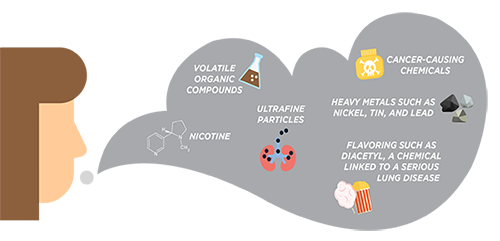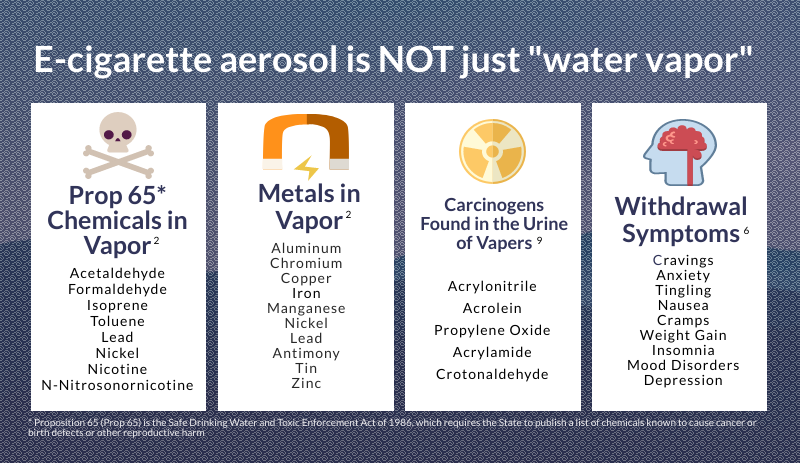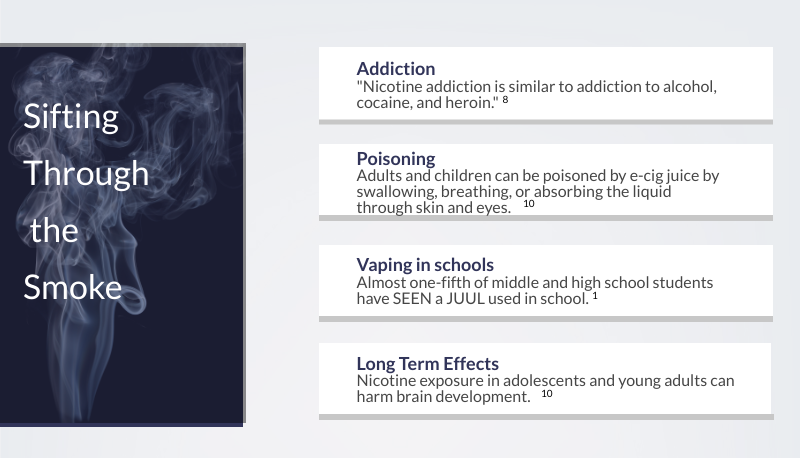E-cigarettes are electronic devices, or electronic nicotine delivery systems (ENDS), that deliver nicotine via a chemical aerosol that is inhaled by the lungs. They are commonly referred to as e-devices, e-pens, e-hookahs, vapes, vape pipes, vape pens, dab pens, dab rigs, mod pods, mods, JUULS, juice, and cigalikes. They come in a variety of brands, sizes, shapes, and flavors.
E-cigarette aerosol is NOT water vapor
The chemical aerosol is created from a liquid, or juice, that is made of nicotine, glycerin, propylene glycol, and other flavorings and unknown ingredients. The aerosol contains harmful chemicals such as nicotine, volatile organic compounds, heavy metals, cancer-causing chemicals, flavorings known to cause disease, and ultrafine particles that can block airways.10

Image source: CDC website
Many have been led to believe that the e-cigarette aerosol is a water vapor. This is just not true. Proposition 65 (Prop 65) is the Safe Drinking Water and Toxic Enforcement Act of 1986, which requires the State of California to publish a list of chemicals known to cause cancer, birth defects, or other reproductive harm. Chemicals on the Prop 65 list have been found in the e-cigarette aerosol, such as acetaldehyde, formaldehyde, isoprene, toluene, lead, nickel, nicotine, and N-nitrosonornicotine.2 Metals have also been found in the aerosol. They include aluminum, chromium, copper, iron, manganese, nickel, lead, antimony, tin, and zinc.2

In addition, cancer causing chemicals, also known as carcinogens, have been found in the urine of people who vape or use e-cigarettes. These carcinogens include acrylonitrile, acrolein, propylene oxide, acrylamide, and crotonaldehyde.9




